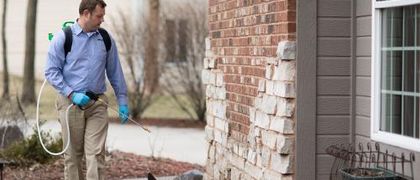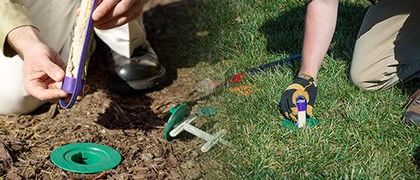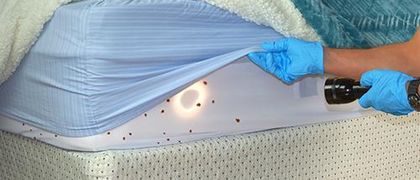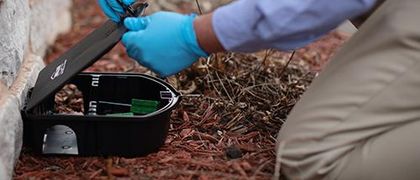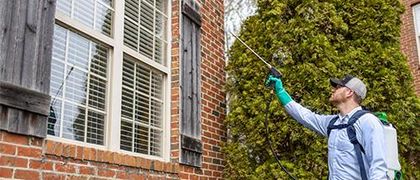How to Get Rid of Carpet Beetles
Because carpet beetles can spot food in obscure areas, they can be one of the hardest indoor pests to manage. Although they’re common household pests, they also hang out in museums, warehouses, or wherever they can find edible food. If you suspect you may have a problem with carpet beetles, here’s how to detect an infestation and treat it.
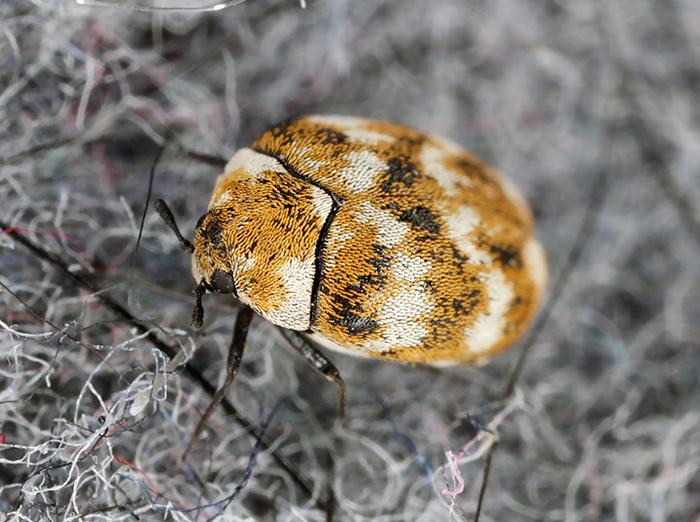
Types of Damage Done By Carpet Beetles
Carpet beetle larvae mostly eat dander, fur, wool, silk, and feathers, which are plant and animal substances. Therefore, they damage household items such as furniture and clothing. They also feast on man-made fibers containing perspiration, oil, and food stains, besides eating insects, decayed animals, and animal hair. What’s more, some larvae consume cereals, nuts, spices, and grains.
Signs of Carpet Beetles
You may see tiny adult carpet beetles fly toward lights or crawl on your floors. Their color is reddish-brown or yellow, and they’re oval shaped. Since they’re slightly larger than a pin head, it can be hard to see the actual bug.
Fortunately, there are several clues suggesting an infestation, such as discovering their fecal deposits and shed skins. However, the obvious way to know there’s an infestation is by noting the damage they do. For example, they:
- Leave behind chewed holes in clothing and other items.
- Gnaw ugly holes in carpeting, which gives them the name, “carpet beetles.”
How Many Carpet Beetles is an Infestation?
Even with just a few carpet beetles, it can be considered an infestation. Female carpet beetles can lay around 50 eggs at a time, making them an insect that can multiply rapidly. They need to get taken care of the moment you notice a few laying around your home.
Where do Carpet Beetles Hide?
Carpet beetles hide out in places including:
- Underneath baseboards
- Under carpet edges
- In and underneath upholstered furniture
- Around door casings
- In materials such as carpets, rugs, slippers, blankets and other soft substances
How to Get Rid of Carpet Beetles
For treatments to be effective, you need to keep your house sanitized and exclude these pests so that you don’t need insecticide treatments. If you think you have an infestation, vacuum all carpeting, in addition to upholstered furniture and areas covered with fabric. Do this daily for at least a week.
- Carpets and upholstery that are severely infected should be steam-cleaned.
- Any invested clothing should be tossed because keeping garments that have been infested makes it harder to stop an infestation.
Although a thorough cleaning is the best way to control carpet beetles, you’ll need to chemically treat those areas or items that you can’t launder or clean. When choosing an insecticide, use a product that specifically lists carpet beetles.
Spot treat infested areas. Restrict sprays to treating underneath furniture, rugs and floor covering edges. You can also spray closet walls and any shelving where infested fabrics have been stored, in addition to crevices and cracks or where there’s lint accumulation. Never spray bedding or garments.
Use boric acid and other dust formulations to treat attics and other places that are unreachable. You’ll probably need a professional exterminator to fumigate an area if you have an extensive infestation.
Considerations and Warnings
- Store your off-season garments in plastic bags or containers. It helps to open dresser or closet doors each day for sunlight exposure for a couple of hours.
- It’s not considered an emergency if you only find a handful of adult beetles, but you do need to be concerned if you discover larvae on household fabrics.
- Never apply insecticides near sparks, open flames or electrical circuits.
- Don’t spray insecticides on tile floors or asphalt. For parquet floors, only apply a light spraying.
- If you have a linoleum floor, spay just a tiny, unnoticeable spot, letting it dry to determine if it causes staining.
- For valuable Oriental rugs, it’s best to let an experienced, qualified pest control specialist handle the job.
You don’t have to live with carpet beetles. A trained pest control technician can visit your home to discover where these pests are coming into your house. Your Miller Pest and Termite Control technician can determine the most effective way to get rid of these and other pests.
What To Expect When Getting An Inspection
If you are in the Kansas City, Omaha, Overland Park, or Des Moines area, and want to work with us so you can get an inspection done, we can help. Whether you need help getting rid of pests or just want to know what you'll be charged you can contact us. We don't require you to clean up or move your furniture around. We'll send someone out that will look for problems like termite damage that shows you need pest removal assistance.
Get Help Now!

